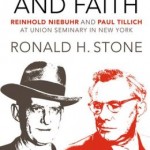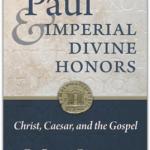Edith Schaeffer died this past Holy Saturday at her home in Gryon, Switzerland at the age of 98. She was a retired missionary, writer, and speaker who, along with her husband Francis, founded the residential study center L’Abri in 1955 in the small Swiss village of Huemoz. Over the next 30 years, the two would work to radically alter the shape of American evangelicalism and American Christianity more broadly.
As others have noted, the Schaeffers were themselves fundamentalists when they first went to Europe as Presbyterian missionaries in 1948. But a traumatic period of doubt that Francis experienced in 1951 forever changed the shape of their ministry. It made them more hospitable to their non-Christian neighbors, more prepared to hear the beliefs, stories, and questions of those non-Christians, and more able to address those questions with honest answers based upon a quiet confidence that God truly did exist and truly had revealed himself through the person of Jesus in the incarnation. This quiet confidence was the underpinning of the entire L’Abri work, as well as the nearly 50 books that the couple would write.
Looking back on their work, three things seem to be particularly distinctive about the L’Abri approach. First, the Schaeffers recognized that if God not only existed, but had spoken and even stepped into history through Christ, then everything changed. The church could not but be a separate people marked by a different way of life. The core beliefs of the church were so radical that any body of believers that was not radically different was likely failing to live out the true weightiness of the idea that there is a “God who is there and who is not silent,” in Francis’s phrase.
The first point was clarified by a second. This same radically different God gave his people a single law, what the Schaeffers called “the law of love.” All of our actions were subject to the judgment of this law, and to the extent that our actions failed to measure up to the law of love, they failed to reflect the intent of the incarnate God.
Third, this loving God who was truly there had made a good world that he loved very, very much and he intended that we, his created beings, would enjoy it, too. True, Scripture teaches that creation is fallen, but even in its fall, there are traces of what Edith called “leftover beauty,” creating a world that Francis called a “glorious ruin.” Not only that, but God was also at work in creation restoring all things to the state he intended for them when he created them. As a friend of mine once told me, “the scope of God’s redemptive work is as broad as the scope of his created work.”
Cumulatively, these three beliefs can be distilled down to something like this: the covenanted people of God united in the church form a counter-polis governed not by the coercive laws of men, but by the gracious law of love modeled by God in the incarnation.
Polis is a Greek word originally used to describe the city-states of ancient Greece. Contemporary Christian writers trying to think through the Christian church’s approach to politics, especially those associated with the Radial Orthodoxy movement, have begun to apply the term to the church as its own distinctive kind of political community. This counter-polis becomes a place where God’s redemptive work in the world starts. In his book Does God Need the Church? Gerhard Lohfink describes it like this:
How can anyone change the world and society at its roots without taking away freedom? It can only be that God begins in a small way, at one single place in the world… Beginning at that place, the new thing can spread abroad, but not through persuasion, not through indoctrination, not through violence. Everyone must have the opportunity to come and see. All must have the chance to behold and test this new thing. Then, if they want to, they can allow themselves to be drawn into the history of salvation that God is creating… What drives them to the new thing cannot be force, not even moral pressure, but only the fascination of a world that is changed.
One of the recent trends in Christian publishing is the rise of books with titles that suggest the church is emerging from a dark age into a new era of faithfulness and engagement with the world. Writers on the Protestant left— Brian McLaren, Doug Pagitt, and Tony Jones—have produced titles like A New Kind of Christianity, A Christianity Worth Believing, The New Christians, and Everything Must Change. Church historian Phyllis Tickle’s book The Great Emergence went so far as to say that the church is now entering a new era comparable to the years after the great schism of 1053 or the Protestant Reformation.
Additionally, Gabe Lyons has written about The Next Christians and authored a book (along with David Kinnaman) bemoaning the failings of the previous generation and labeling their behavior UnChristian. Seattle pastor Mark Driscoll has spoken of a “resurgence” within the church, while many of his Calvinistic peers have hailed the current renaissance of Calvinist thought as a mark of a new dawn for American evangelicalism.
All of these thinkers disagree with each other about most everything, but the tie that binds them together is their shared belief in discontinuity between the contemporary American church and the American church of previous generations.
It would be easy to triumphantly follow along with that storyline. Perhaps the greatest development in the past 15 years of Christian thought has been a reinvigorated interest in the physicality of Christian faith, which has flowed from a renewed understanding of the doctrines of creation and the incarnation. However, I fear that this interest amounts in the end to much less than we’d like to think.
Unfortunately, this is where the argument for discontinuity with the past looks increasingly specious. In many ways, contemporary Christians have rejected the separatism of their parents’ generation and replaced it with a trendy syncretism that ends up having the same effect: a failure to create counter-cultural Christian communities that adequately bring the Gospel to bear in the lives of our peers outside the church. Consider the way our church architecture is virtually indistinguishable from that of the surrounding culture. Or how so many of our causes and activist campaigns are over the same issues and waged in the same way as the causes and campaigns of those outside the church. Or look at the way we beam in our favorite on-air personalities from building to building to preach to people with whom they’ve never even spoken. (Anyone who has ever seen the Sunday’s Coming video knows exactly what I’m talking about.) Consider the rise of the “Green Letter Bible,” and how so much contemporary worship is largely indistinguishable from a Top 40 concert. Finally, take how our political presence often involves little more than “me too”-ing the latest declaration from the latest leader from our preferred party . (One need only read World or Sojourners to see this particular problem on full display.)
What this means is that we’re attempting to apply the fact that God loves and cares for creation within deeply syncretistic age in the church. And where this syncretism often leaves us is with a faith that is more engaging to those within the church but still largely irrelevant to those outside. It offers us practical actions that reflect some kind of changed life, but it struggles to articulate a cumulative Christian culture that resembles that famed “city on a hill” described in Matthew. As the line between the church and the world becomes fuzzier, it becomes more difficult to articulate a distinctly Christian counter-culture that is able to faithfully preach the Gospel to the watching world.
Our problem is described in the anecdote attributed to several different medieval saints but most probably referring to Francis of Assisi: Upon being given a tour of the opulent new churches and palaces constructed by the church in Rome, one church official told Francis, “No longer can the church say, ‘Silver and gold have I none.” “That’s true,” Francis is said to have replied, “but neither can the church say, ‘Rise up and walk.’”
Which brings me back to my initial point. We cannot afford to cut ourselves off from the wisdom of previous generations of Christians. Generation X had its faults and weaknesses. Having grown up in a strict fundamentalist church, I’m well acquainted with them. But their separatism makes them in many ways uniquely qualified to help us understand how to properly apply the doctrines of creation and incarnation in our daily lives. Where our generation prioritizes relevance and can often embrace “incarnational living” as a way to justify those choices, Christians from a more separatist generation can recognize those temptations and avoid them. And if Christians from that generation did take a more active interest in the incarnation, they could become phenomenally helpful teachers to the contemporary generation. Thankfully, such Christians did exist and they can teach us a great deal if we will but listen. And the Schaeffers are chief among them.
L’Abri was a small-scale counter-polis that modeled an alternative way of life at a particular moment in history. The Schaeffers’ understanding of the faith caused the community to be simultaneously distinct yet warm, welcoming, and incredibly attractive. Indeed, L’Abri was something of an oddity throughout the 1960s, as no one quite knew what to make of it. TIME magazine ran a feature on the work in 1960, Timothy Leary made several trips to the Schaeffers’ chalet, and, according to their son Frank, both Keith Richards and Eric Clapton were interested in visiting, though neither were ever able to make the trip.
Denis Haack, co-director of Ransom Fellowship in Rochester, MN came of age in the ‘60s and remembers discovering Schaeffer’s thought for the first time. He explained it to me by saying:
Imagine a world in which there are three approaches to the world: Billy Graham crusades, the personal evangelism of Campus Crusade, and L’Abri. The first two are huge, newsworthy, history making, reeling in thousands of converts, and completely limited to “spiritual” concerns. Then there is L’Abri, at the time a couple of chalets in the Alps. The Sixties explode, young adults start streaming out of the church complaining of too-long sermons and an irrelevant faith and flock to a place where lectures go on for hours and they discuss everything under the sun. Like I say, trying to describe it is hard. As someone who lived through it… L’Abri was a demonstration that changed everything.
That phrase, “a demonstration that changed everything,” captures both what makes the incarnation such an irresistibly compelling moment in redemptive history as well as what makes the church’s contemporary interest in the incarnation so puzzling. It’s wonderful to see young Christians talking more seriously about the incarnation and about God’s care for creation in general. But if most of what that talk leads to practically is video preaching, more warehouses pretending to be churches, and a set of political and cultural convictions that look basically like the political and cultural convictions of our peers outside the church, what good is the talk? If we gain the cover of Rolling Stone but lose our soul, what does it profit us?
Perhaps I am too harsh. All things considered, I would rather come of age in the church today than in the church of the late ‘80s and early ‘90s. It’s certainly preferable to be in a church that is reading Desiring the Kingdom and To Change the World instead of a church reading The Late Great Planet Earth.
But, as one of my pastor’s seminary professors liked to tell his students, the decks are ever shifting. And Christian faithfulness involves more than simply correcting the excesses of previous generations. It also involves faithfully articulating the Gospel in the midst of opposition. It involves articulating with our lives a community that truly is a counter-polis governed by the covenantal law of love rather than the coercive laws of power that mark the world outside. I suspect that we have many of the intellectual resources needed to create such communities, but now we are down to the hard task of beginning to realize them in practical, costly ways. There aren’t easy answers, but there are examples set before us across church history that can help us as we pursue such communities. And in recent memory, the Schaeffers’ work at L’Abri is one of the finest templates I know. We’d be fools to ignore it.

















